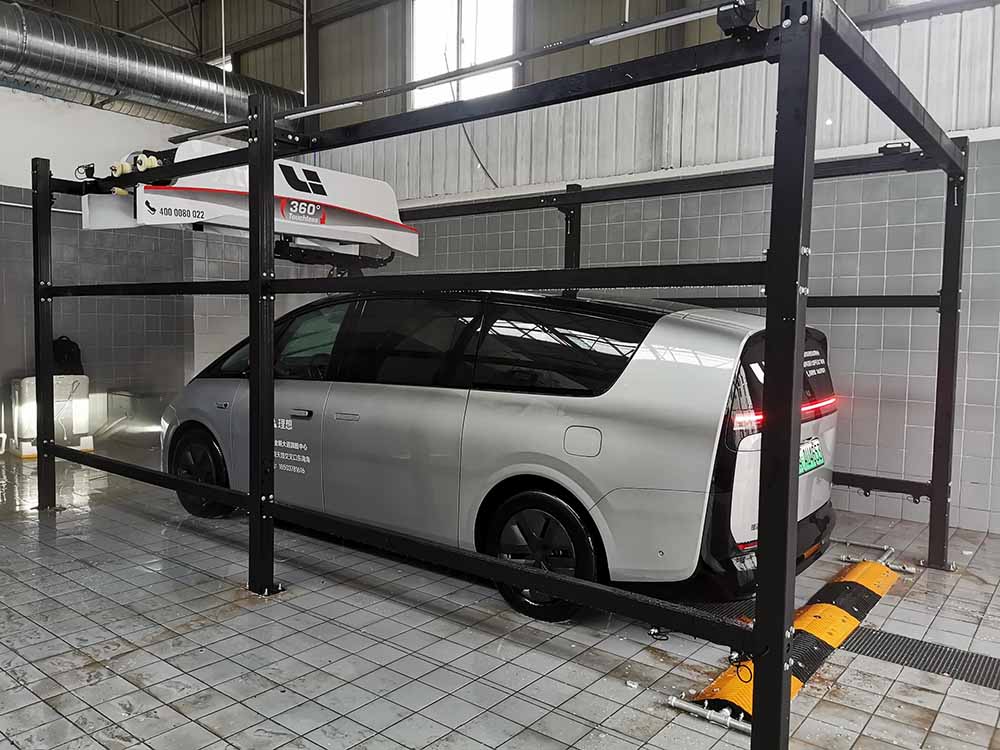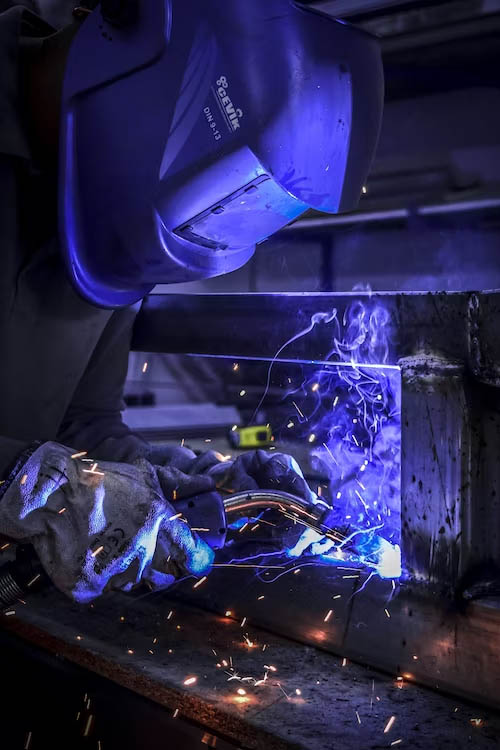Running a car wash involves more than just keeping vehicles clean—it requires safeguarding your car wash equipment, revenue, customers, and reputation. Security breaches, theft, vandalism, or accidents can derail operations, lead to costly repairs, and erode customer trust. In an industry where cash, high-value equipment, and round-the-clock accessibility intersect, a robust security system isn’t optional; it’s a cornerstone of sustainable success.
This guide walks you through the critical security considerations for car washes, combining industry best practices with real-world lessons learned from car wash operators. Whether you’re a self-serve, express, or full-service wash, these strategies will help you mitigate risks and ensure peace of mind.

Why Car Washes Are Prime Targets for Security Threats
Before diving into solutions, understand the unique vulnerabilities of car wash businesses:
- Unattended Operations: Many washes operate 24/7 with minimal staff, making them susceptible to after-hours crimes.
- Cash Transactions: Payment kiosks, coin machines, and vacuums often hold cash, attracting theft.
- High-Value Equipment: IBAs, vacuums, and detailing tools are expensive to replace if stolen or vandalized.
- Liability Risks: Slippery floors, malfunctioning equipment, or unauthorized access can lead to injuries and lawsuits.
- Cyber Threats: Modern payment systems and customer data require protection from hacking or breaches.
1. Physical Security: Deter, Detect, Delay
A layered approach to physical security minimizes vulnerabilities.
a. Perimeter Protection
- Fencing and Gates: Install anti-climb fencing (8+ feet) around equipment storage areas. Use locked gates with access control systems.
- Bollards and Barriers: Protect payment kiosks and entrances from vehicle ramming attacks with reinforced bollards.
- Lighting: Motion-activated LED lights with 20,000+ lumens deter trespassers and eliminate dark corners.
Pro Tip: Use tamper-proof lighting fixtures to prevent bulb theft.
b. Surveillance Systems
- High-Resolution Cameras: Deploy 4K IP cameras with night vision, covering:
- Payment kiosks and cash collection points.
- Equipment bays and chemical storage.
- Entrances, exits, and perimeter lines.
- Video Analytics: AI-powered systems can detect loitering, license plates, or unusual activity (e.g., someone tampering with vacuums).
- Cloud Storage: Avoid on-site DVRs/NVRs that thieves can steal. Use encrypted cloud storage with 30+ days of retention.
Case Study: A Texas wash reduced vandalism by 90% after adding cameras with real-time alerts to their security firm.

2. Access Control: Restrict Unauthorized Entry
Limit access to sensitive areas while maintaining customer convenience.
- Electronic Locks: Use RFID or biometric locks on equipment rooms, offices, and cash storage. Track entry logs to identify suspicious patterns.
- Time-Limited Access: Restrict vendor or staff access to specific hours (e.g., maintenance crews only between 8 AM–5 PM).
- Payment Kiosk Safes: Integrate drop safes into kiosks that seal cash after hours, requiring manager codes to open.
Red Flag: Avoid traditional padlocks, which are easily picked or cut.
3. Cash Handling and Payment Security
Cash theft is a top concern. Protect revenue with these measures:
- Cashless Payments: Encourage credit/debit cards, mobile wallets, or app-based payments to reduce cash on-site.
- Daily Collections: Empty kiosks and vacuums multiple times daily; never leave cash overnight.
- Tamper-Proof Coin Boxes: Use dual-lock systems requiring two keys (manager and vendor) to open.
Stat: Car washes using cashless systems report 40–60% lower theft incidents.
4. Equipment and Chemical Storage Security
Thieves often target copper wiring, pressure washers, or chemicals.
- Anchor Equipment: Bolt down IBAs, compressors, and vacuums to concrete floors.
- Cage Storage: Store high-value items in welded steel cages with motion sensors.
- Chemical Lockers: Keep detergents and waxes in fire-resistant, locked cabinets to prevent theft, spills, or tampering.
5. Cybersecurity for Modern Car Washes
Digital payment systems and customer data require protection.
- PCI Compliance: Ensure payment processors meet Payment Card Industry Data Security Standard (PCI DSS) requirements.
- Network Segmentation: Isolate payment systems from public Wi-Fi or customer-facing networks.
- Regular Updates: Patch software vulnerabilities in payment kiosks, apps, and surveillance systems.
Example: A Midwest operator faced a $50,000 ransomware attack after hackers breached an outdated kiosk OS.
6. Alarm Systems and Monitoring
Deterrence alone isn’t enough—rapid response is critical.
- Intrusion Alarms: Place sensors on doors, windows, and equipment storage. Use loud sirens (110+ dB) to scare off intruders.
- Environmental Sensors: Detect water leaks, fire, or chemical spills to prevent costly damage.
- Professional Monitoring: Partner with a 24/7 security firm to dispatch police or fire services immediately.
Cost-Saving Tip: Some insurers offer discounts for monitored alarm systems.
7. Liability and Customer Safety
Avoid lawsuits with proactive safety measures:
- Slip-Resistant Flooring: Use textured concrete or coatings in wash bays and walkways.
- Emergency Stop Buttons: Install marked E-stop switches on IBAs and conveyors.
- Lighting and Signage: Post warnings (e.g., “Slippery When Wet”) and ensure all areas are well-lit.
Legal Insight: In a 2022 lawsuit, a car wash was found 80% liable for a customer’s fall due to inadequate lighting.
8. Staff Training and Protocols
Employees are your first line of defense.
- Emergency Drills: Train staff to respond to theft, medical emergencies, or equipment failures.
- Cash Handling Policies: Limit cash access to trusted managers; conduct surprise audits.
- Incident Reporting: Use digital logs to record security issues and track resolutions.
9. Regular Audits and Maintenance
Security systems degrade over time without upkeep.
- Monthly Checks: Test cameras, alarms, and locks. Replace batteries in sensors and keypads.
- Vulnerability Scans: Hire a security firm annually to identify weaknesses (e.g., blind spots in camera coverage).
- Software Updates: Automate updates for surveillance systems and payment terminals.
10. Insurance and Legal Compliance
Align security measures with insurance and regulatory requirements.
- Review Policies: Ensure coverage includes theft, vandalism, cyberattacks, and liability.
- Local Regulations: Comply with privacy laws (e.g., signage notifying customers of surveillance cameras).
- Documentation: Keep records of security upgrades to streamline insurance claims or legal disputes.

Cost vs. Benefit: Building a Security Budget
While security systems require upfront investment, they pay dividends in risk reduction:
| Security Measure | Estimated Cost | Key Benefit |
|---|---|---|
| 4K Cameras + Cloud Storage | $3,000–$8,000 | Deter theft; provide evidence for police |
| Access Control System | $1,500–$4,000 | Prevent unauthorized equipment access |
| Monitored Alarm System | $500–$1,500/year | Rapid response to break-ins or fires |
| Cashless Payment Upgrade | $2,000–$5,000 | Reduce cash handling risks |
Case Study: How “Smart Car Wash” Stopped Crime
Smart, a Florida-based chain, faced recurring thefts at two locations. Their solution:
- Installed license plate recognition (LPR) cameras at entrances.
- Upgraded to cashless payments, cutting on-site cash by 90%.
- Partnered with a monitoring firm for real-time alerts.
Result: Theft incidents dropped to zero within 6 months; insurance premiums fell 15%.
Your Action Plan: Secure Your Wash in 7 Days
- Day 1: Conduct a security walkthrough—note vulnerabilities.
- Day 2: Get quotes for cameras, alarms, and access control.
- Day 3: Transition to cashless payments; schedule staff training.
- Day 4: Install motion-sensor lighting and signage.
- Day 5: Anchor equipment and lock chemical storage.
- Day 6: Set up cloud-based surveillance and alerts.
- Day 7: Review insurance policies and document upgrades.
Final Thought: Security is a Competitive Advantage
A secure car wash doesn’t just protect assets—it builds customer loyalty. Patrons return to businesses where they feel safe, and employees thrive in controlled environments. By investing in a layered security strategy, you’re not just preventing losses; you’re positioning your wash as a trustworthy, professional destination.
Need Help? Contact us for a free security audit template or vendor recommendations tailored to your wash.
📞 Call: 8618676736775
📧 Email: [email protected]
🌐 Visit: www.mattiascarwash.com



